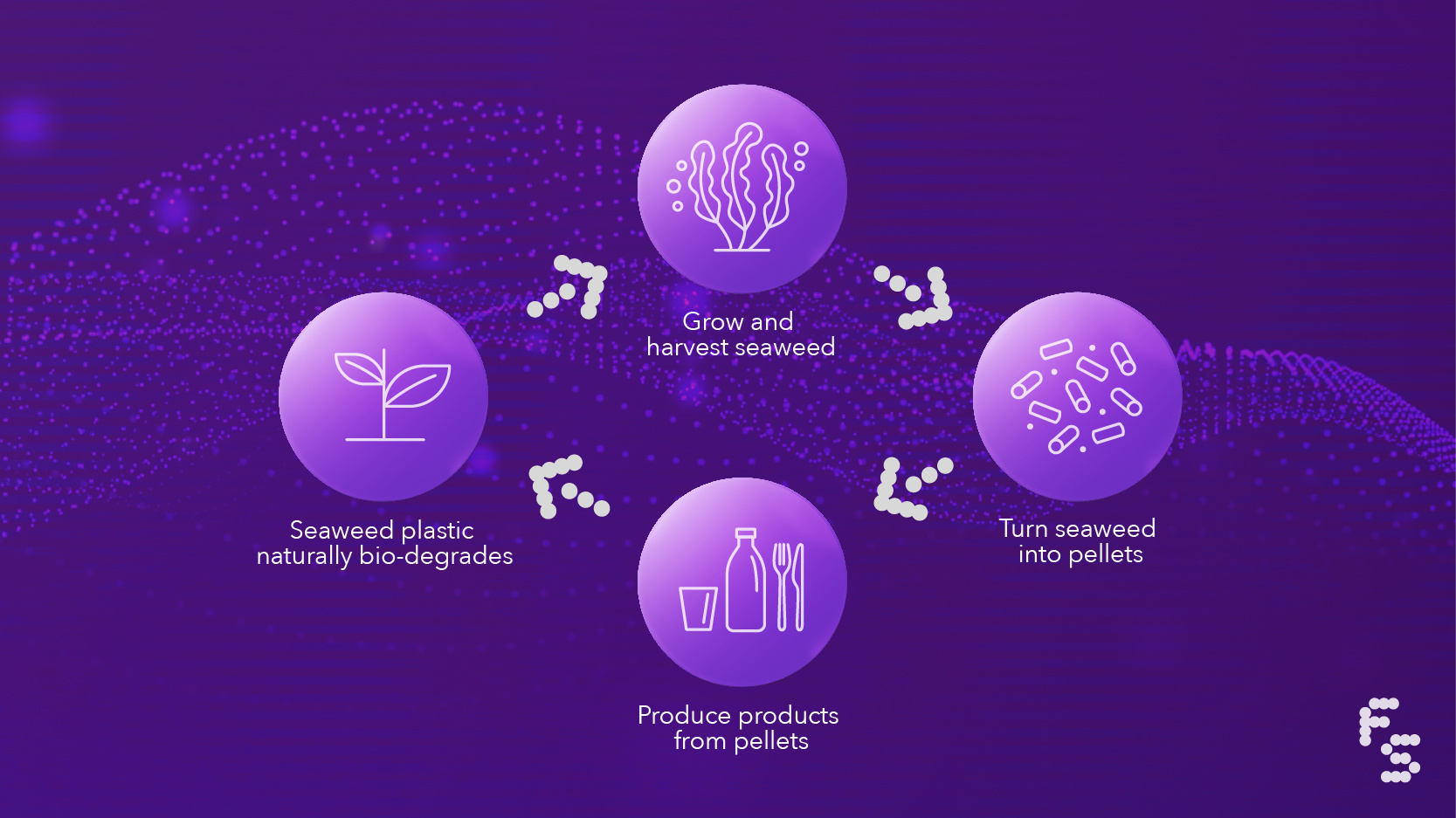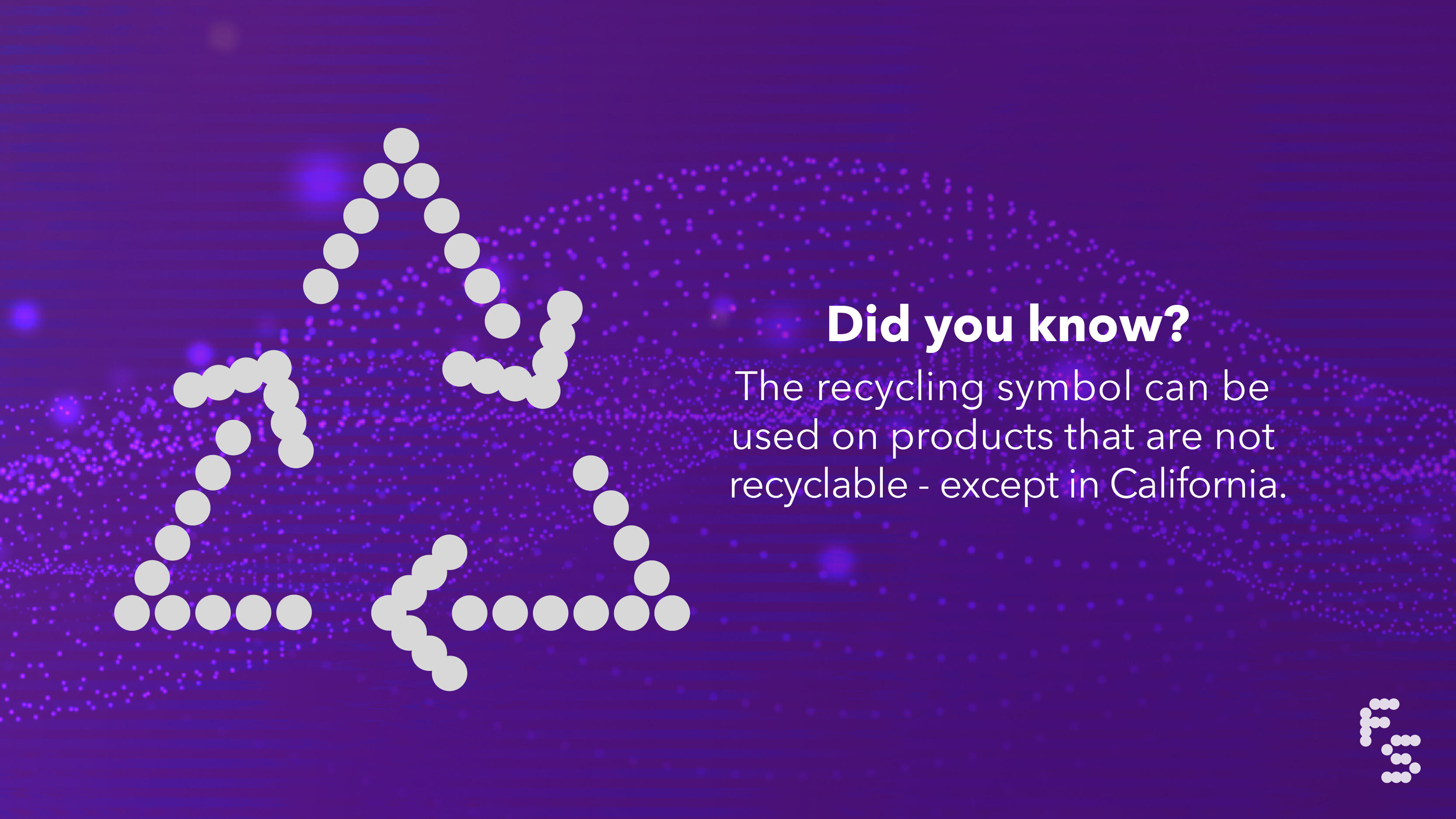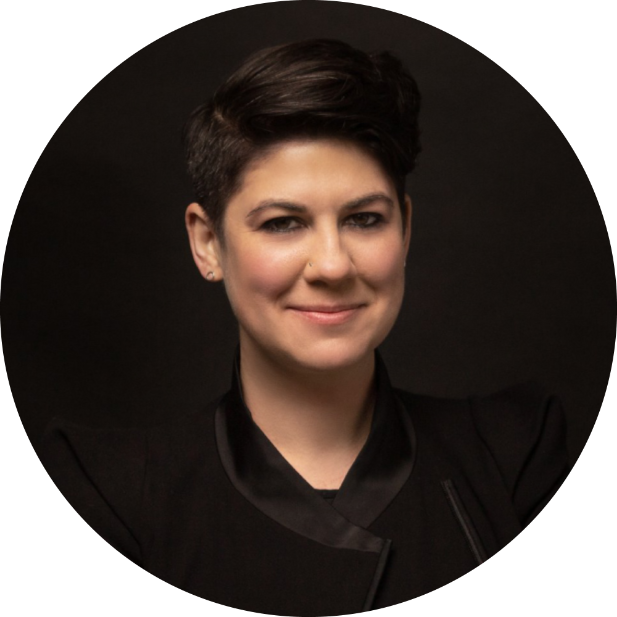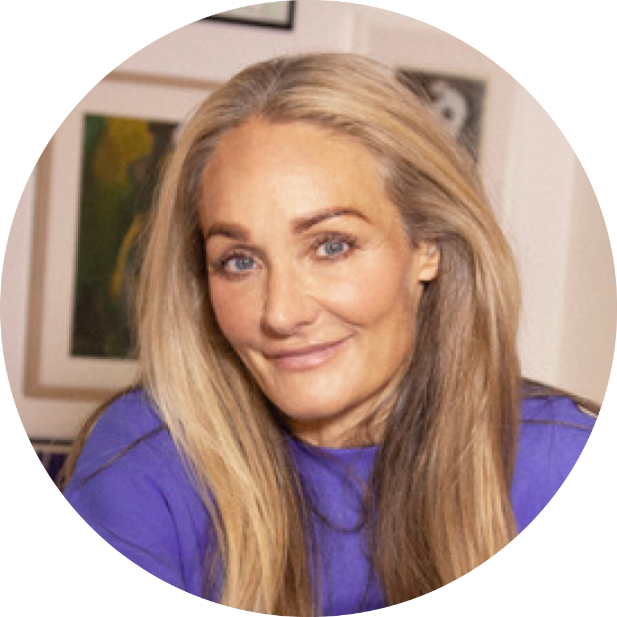Get ahead of the curve
Discover the future of productivity and our planet in the third instalment of Future State.
Coming to Spark Arena on 2 May 2024. Tickets on sale now.
Buy tickets
This month we explore the role of innovation and transformation in sustainability and how they provide businesses with new opportunities for growth and resilience.
In this instalment of Future State, brought to you in partnership with Semi Permanent, our speakers Dr. Leyla Acaroglu, CEO and Founder of The UnSchool, Swivel Skills & Disrupt Design, Justin Kamine, Manager of KDC Earth and Eva Kruse, Chief Global Engagement Officer at PANGAIA, share their insights.
Justin Kamine, Manager of KDC Earth, says creating sustainable solutions that fit within the existing operations of large companies, is essential to scaling sustainability effectively. To do this, he notes, "tech is absolutely key and critical for driving the growth of sustainable solutions".
His seaweed-based bioplastics business is a good example of this. Loliware aims to replace plastics at scale with seaweed pellets that mimic plastic resin. With the help of technology, they've been able to create a product that can replace plastic pellets in the existing equipment of large single-use plastic manufacturers, without disrupting their core business operations.
Justin believes that technology can help in reversing or solving resource inefficiencies created by humans by tapping into nature's solutions. He suggests technology can help us understand this and harness solutions such as circular economies, upcycling resources and creating additional inputs that leverage nature in supply chains.
For instance, Loliware uses a circular system to cultivate and harvest seaweed, converting it into pellets to create eco-friendly products that can naturally biodegrade after use.
“Technology has played an intimate role in everything we do, and it’s really about leveraging the capabilities to drive the impact that we are all desiring as big and as quick as possible,” says Justin.
Find out how Loliware are replacing plastic at scale

Top three tips for New Zealand businesses on their sustainability journey
1. Learn from others
New Zealand can learn from global sustainability efforts and become a leader in the field. Technology, according to Justin, is transferable across different contexts, making it possible to adopt solutions from other countries and implement them successfully.
Through the Ministry of Business, Innovation and Employment’s Innovation Partnerships programme, New Zealand businesses have been able to partner with international companies that are pushing the boundaries of technology and solving the world’s big problems.
Japanese gaming company JP Games partnered with Dunedin’s Centre of Digital Excellence (CODE), with a shared focus on fostering diversity and exploring new territory in game development. This resulted in New Zealand Paralympian Holly Robinson being immortalised in the official video game of the Tokyo 2020 Paralympics ‘The Pegasus Dream Tour’, one of just nine real-life athletes included.
2. Prioritise action
Not every solution will be a perfect fit, but adaptation and creativity are part of what makes a business an evolving adventure. However, as Justin says, “There’s no better time than now, and you’ve just got to kind of jump in and do it, especially if you know it’s the right thing to do.”
3. Connect your sustainability story to consumers
Justin believes people do truly care about sustainability and suggests businesses link their progress to something consumers can identify with. By positioning the story in this way, consumers will feel connected and will be more likely to get on board.
The Warehouse Group is an example of a New Zealand company that has successfully connected their sustainability story to the consumer. Sustainability is a key part of their business strategy, leading to a brand transformation centred on customer satisfaction and sustainability.
The company engages consumers in their sustainability journey by sharing goals and progress. Customer feedback on packaging and ease of recycling prompted the business to switch from PVC satchels to reusable cloth bags or recyclable cardboard bands for their bedding products. They're also testing a new packaging solution using moulded cardboard and a form of mushroom-based material.

Did you know, there are no rules around how the recycling symbol can be used?
Dr Leyla Acaroglu, a leading force in the movement for a sustainable and circular future, says only California has rules for how the recycling symbol is used.
In 2022, Senate Bill 343 was signed into law, banning the use of the recycling symbol on products that are unrecyclable. The regulation aims to cut down single-use trash pollution and boost recycling efforts as a first step in addressing a system failure. Find out more about Senate Bill 343
California is just one example of how lawmakers can come to the table and make a change in designing a sustainable future. Anywhere else in the world? It’s fair game for the symbol to appear on any product packaging.
“If you can chuck a recycling symbol on anything, you can basically trick somebody into believing it’s recyclable,” Leyla says. This is why wishcycling is a problem.It’s a manipulative tool. People want to do the right thing and this little symbol can be used to make people feel good, but it doesn’t solve the problem.
As Leyla points out, recycling and wishcycling are end-of-pipe quick-fixes. The real solution requires a full system transformation, which includes the reimagining of plastic products into sustainable materials.

Enter technology as a vehicle to find these solutions.
American-based company Forager by Ecovative, designs and grows high-performance mycelium materials after a need for circularity was identified in the fashion, apparel and automotive industries.
They use AirMycelium technology, which uses mycelium as a natural adhesive and binding agent. These bio-materials are grown in nine days and offer an eco-friendly, fully compostable alternative to traditional materials like plastic, leather and foam. Learn more about AirMycelium technology
While bio-based materials can go into nature, it’s not the best way to use them. Leyla suggests another area where governments can drive system change is by investing in biodigesters, to convert bio-materials into energy. Investing in biodigesters also encourages material innovation in businesses’ products or services.
“The thing about innovation is, it’s going to take time to come up with an idea and then turn that idea into a reality. It's just like nature - you don't have delicious vegetables the day after you plant the seed,” says Leyla. “It's important to see this as a process, to be excited by it, to be willing to deal with the complexity and to see that any time you do this, you're always going to gain in some way, even if that's through learning what not to do.”

In the world of sustainable fashion, few names stand out quite like Eva Kruse. As the former CEO and President of Global Fashion Agenda, she’s played an instrumental role in shifting the global fashion industry towards sustainable practices.
According to Eva, the future of sustainability lies in businesses’ willingness to work together towards shared goals, particularly when it comes to their environmental footprint.
Achieving true industry transformation requires collective effort and collaboration. To foster authenticity and collaboration, Eva emphasises the importance of genuine human connection and the power of face-to-face meetings.
“You have the power to decide how responsible you want your product to be – and your design will make it desirable and attractive,” says Eva.
For New Zealand businesses, this serves as a reminder that innovation and sustainability can go hand in hand, creating value while protecting the environment.
The need for collaboration is particularly important when it comes to sustainability. Eva suggests there's a growing readiness among businesses to collaborate in this area, as it’s seen as a safe and beneficial space.
This trend is particularly noticeable among small and medium-sized enterprises, who often share the same supply chains and can achieve more leverage by working together.
A great collaboration example comes from global giants H&M and Ikea. They joined forces for a large-scale study on recycled textiles to tackle an issue that neither company could solve on its own. Discover the impact of the H&M and Ikea collaboration
Brings together national and global sustainable executives for a powerful day of insights, discussion and connection.
Find out more about the summitA workshop about how circular economy thinking can be applied to your business or sector.
Find out more about this workshopA workshop to equip leaders with the knowledge, commitment and confidence to wield real influence on sustainability at all levels in your organisation.
Find out more about this workshopPANGAIA’s ambitious goal is to drive broader industry transformation, primarily through material science innovation.
The company has developed its unique intellectual property, FLWRDWNTM, a sustainable alternative to traditional goose and duck down, made from leftover flower products. This innovative material, as warm as animal down, is open source, allowing companies to buy it for their own products.
An example is Kowtow, a Wellington fashion brand, who recently released an open-source handbook providing a guide to plastic-free practices.
It was designed to help others on their plastic-free journey, offering freely available knowledge to be used and adapted in other collections. This aligns with Kowtow’s commitment to transparency and collaboration in the pursuit of sustainable fashion.
While PANGAIA’s price points may not suit the fast-fashion sector, the company maintains that their products are simply made better because they consider all external factors and make sure the entire supply chain is covered.
Eva suggests that as innovations scale, prices will eventually decrease, making sustainable solutions more accessible. She says that generally, the more you know about your business, supply chain and your footprint, the more you can optimise the system.
Reducing resource consumption, whether it be fibres, water, energy or producing more precise amounts, results in cost savings.
An example is Tesla. Its electric cars were initially expensive, but as production scaled up, prices dropped, making them accessible to a wider market.
The message to New Zealand businesses is clear: sustainability isn’t an option, it's the only way forward.
Any company sourcing natural resources must strive for optimisation and efficiency as part of a sound business case. As resources become increasingly expensive and complex to produce, sustainability will likely be the only way to keep employees and stay competitive.
An example is NZ-based EVNEX, a renewable energy startup that develops intelligent electric vehicle charging technology.
The company uses a mix of renewable energy and carbon-based electricity sources, while supporting the adoption of renewable energy through the promotion of electric vehicles. They also show transparency in their operations by sharing some of the thought process behind their business operations.
Eva says sustainability is about effectiveness and optimisation – creating things with less input but more impact.
There should be no excuse for businesses not incorporating sustainability into their core business model and future planning. Ignoring the bigger picture of our planet’s future is a risk that no business can afford.
Tonkin + Taylor, an environmental and engineering consultancy in New Zealand, is committed to integrating sustainability into all aspects of their operations.
Their Sustainability Policy outlines this commitment, while their Sustainability Strategy directs their efforts. They implement 'Green Leases,' incorporating sustainability criteria for both tenants and landlords, including energy efficiency and waste reduction goals. This initiative began with their Auckland head office lease.
Eva acknowledges it’s a very challenging time to be a business leader right now, but encourages leaders to start adopting long-term thinking and sustainable practices.
It's important for businesses to understand the connection between humans and the environment. They should include this understanding in their business plans and the way they operate.
Business leaders should constantly weigh up the benefits of short-term business incentives against long-term sustainability goals. While it’s important to meet immediate objectives such as quarterly targets and shareholder value, losing sight of long-term vision can be detrimental to the planet.
Ethique is a Christchurch-based company that creates solid beauty bars as sustainable alternatives to liquid products. They're dedicated to reducing waste, maintaining ethical standards and supporting the environment and communities.
Their products help reduce pollution, wildlife impact, microplastics, chemical exposure and greenhouse gas emissions, demonstrating their commitment to sustainability. Find out more about Ethique and their mission
Eva says, “as business leaders, we cannot afford to not think long term about how our actions today are impacting everything tomorrow.”
A balance between commerce and social responsibility is key. Eva says every action a business takes should ideally contribute positively to the world.
This aligns with the growing trend of businesses taking on social responsibility and looking beyond just profits.
New Zealand company Fisher & Paykel Healthcare, a leading innovator in healthcare devices, demonstrates how businesses can integrate corporate responsibility, sustainability and business objectives to create a positive impact. They prioritise key environmental metrics and invest in initiatives to respect the environment while achieving business goals.
The company actively supports local communities and initiatives, contributing to societal development and wellbeing. They also prioritise employee wellbeing to cultivate a productive and inclusive work culture, which supports business success. Additionally, their supply chain is designed to promote a sustainable future.
While their products drive commercial success, Fisher & Paykel Healthcare understands that strong financial performance can't be achieved without looking after their people, customers, suppliers, the environment and each other. In doing so, they’re able to be more innovative and more successful in the long run.
Eva says businesses should foster a connection with nature, understand their impact on ecosystems and strive to promote sustainability.
This could include sourcing materials locally to minimise carbon footprints, partnering with sustainable suppliers, investing in renewable energy sources or aligning business practices with environmental conversations.
Nestlé New Zealand has made significant strides in both renewable energy and sustainable sourcing. They now source 100% of their energy from renewable sources, powering all their New Zealand sites with renewable electricity. The Nestlé Responsible Sourcing Standard outlines what Nestlé requires from suppliers to sustainably source materials long-term and lays the groundwork for scaling up regenerative food systems.
Additionally, Nestlé has been sourcing dairy from New Zealand for over a century and incentivised Fonterra farmers to meet sustainability goals with extra payments, showing their commitment to sustainable practices within its supply chain.
The actions made today will have far-reaching impacts on future generations. Every action, whether big or small, contributes to the larger goal of preserving our planet for future generations. Businesses must therefore strive to make sustainability a core part of their operations and culture.
“Change is possible and every small action does matter,” says Eva.

Discover the future of productivity and our planet in the third instalment of Future State.
Coming to Spark Arena on 2 May 2024. Tickets on sale now.
Buy ticketsEva Kruse offers valuable insights for New Zealand businesses to improve their sustainability efforts.
Read moreEva Kruse believes fashion holds a significant responsibility, but also a great opportunity to be a trendsetter and a change-maker. She offers guidance and tactics for New Zealand brands to contribute to this global agenda.
Read more